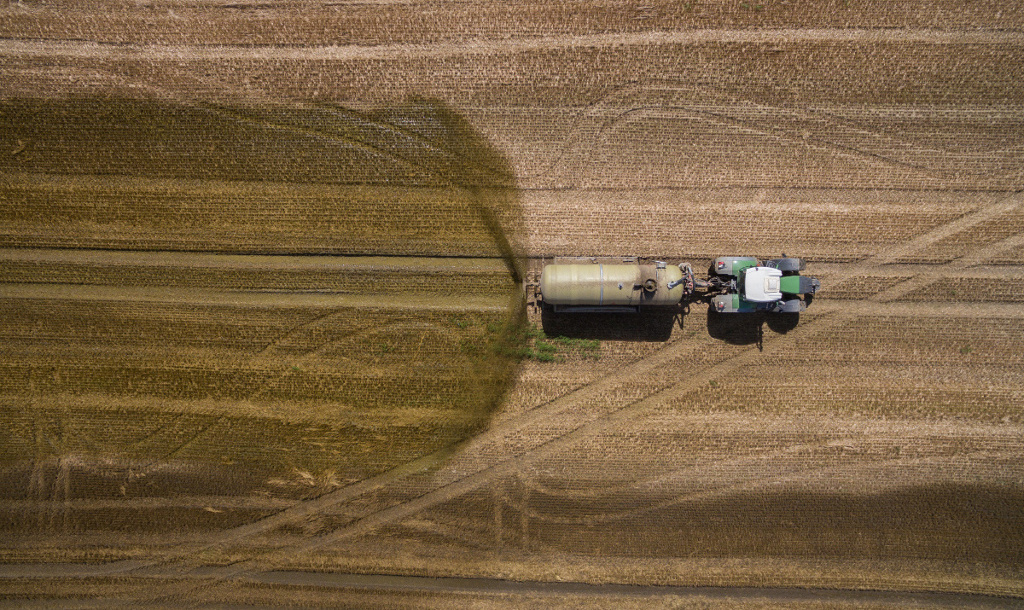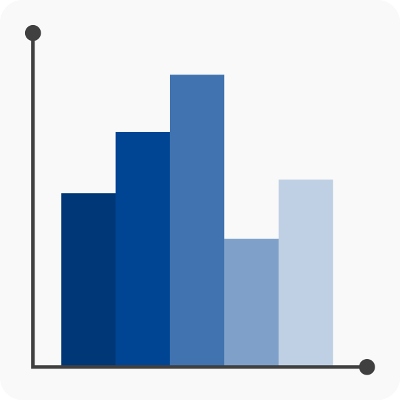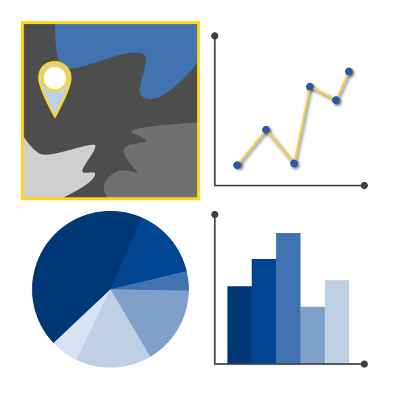Human activities have altered the natural nitrogen and phosphorus cycles, increasing the amount of nutrients losses to air, water and soil, with detrimental impacts for human health, ecosystem functioning and biodiversity. In 2011 the first European Nitrogen Assessment (ENA) gathered scientific evidence on the alteration of the nitrogen cycle in Europe and its consequences on air and water quality, terrestrial biodiversity and climate, drawing attention on possible actions to curb and reduce nitrogen pollution acting at different points of the cycle. ENA paved the way for an integrated nutrient management action. Knowledge on the nutrient fluxes originated from different sources and flowing into different environmental compartments is key for understanding the level of disruption of the natural Nitrogen and Phosphorus cycles and for planning measures to reduce nutrient pollution while preserving soil fertility.

Nitrogen and Phosphorus cycles in EU27
Major fluxes in the nitrogen and phosphorus cycles around year 2015 are estimated for EU27, based on recent data from different sources, including both reported data and model results (Table 2.1 of the report).


Nitrogen fluxes in 2015 by country

Phosphorus fluxes in 2015 by country
| Data Source | Data type | Format of data | Unit of measure | Reference year | Spatial coverage | Ref Sys (EPSG) | Description / Source / Citation |
|---|---|---|---|---|---|---|---|
| EDGAR database | Map of N2O emissions | netcdf, 0.1 x 0.1 deg | kg/sqm/s | 2015 | global | 4326 | The Emissions Database for
Global Atmospheric Research (EDGAR) is an independent global emission inventory of
greenhouse gases (GHG) and air pollutants developed by the Joint Research Centre of
the European Commission. The non-CO2 components in EDGARv5.0 cover a long time
series of emissions for the period 1970-2015; emissions are estimated for all
anthropogenic emission sectors with the exception of Land Use, Land Use Change and
Forestry (LULUCF) at country and annual level in a consistent and comparable way for
all world countries. Regarding Nitrogen, EDGAR provides N2O, NOx and NH3 emissions
(unit: kt).
Crippa, M., Oreggioni, G., Guizzardi, D., Muntean, M., Schaaf, E., Lo Vullo, E., Solazzo, E., Monforti-Ferrario, F., Olivier, J. and Vignati, E., Fossil CO2 and GHG emissions of all world countries, EUR 29849 EN, Publications Office of the European Union, Luxembourg, 2019, ISBN 978-92-76-11100-9 (online),978-92-76-11025-5 (print), doi:10.2760/687800 https://data.europa.eu/doi/10.2904/JRC_DATASET_EDGAR https://edgar.jrc.ec.europa.eu/overview.php?v=50_GHG https://edgar.jrc.ec.europa.eu/overview.php?v=50_AP |
| Map of NOx emissions | |||||||
| Map of NH3 emissions | |||||||
| IPCC2006 total N2O, NOx, NH3 emissions by sector and Country | table | Gg | 2015 | EU28 (by country) | |||
| EMEP Model | Total N deposition | netcdf, 0.1 x 0.1 deg | mg/sqm/y | 2015 | Physical Europe | 4326 | The co-operative programme for monitoring and evaluation of the long-range transmission of air pollutants in Europe (unofficially 'European Monitoring and Evaluation Programme' = EMEP) is a scientifically based and policy driven programme under the Convention on Long-range Transboundary Air Pollution (CLRTAP) for international co-operation to solve transboundary air pollution problems. Inside this programme, the ‘EMEP open-source' model has been developed, to simulate air quality and deposition due to emission reduction policies. The EMEP model, for this project, has been run at the Joint Research Centre. |
| DayCent Model |
- Sinthetic and organic fertilization - biological N fixation (plant+soil) - N deposition (from EMEP) - N export from grain - N export from above ground biomass - N in NO3 leaching - N in DOC (organic N leaching) - N2O - NO - N2 - N loss by erosion |
tiff (Raster dataset with 12 bands), 1000 x 1000 m | kg/ha/y | Average value 2010-2019 | Physical Europe | 3035 | JRC-D.3 full N budget in agricultural
soils by DayCent model
Quemada, M., Lassaletta, L., Leip, A., Jones, A., and Lugato, E. Integrated management for sustainable cropping systems: Looking beyond the greenhouse balance at the field scale. Global Change Biology, 2020a, 14989 https://doi.org/10.1111/gcb.14989 Lugato, E., Leip, A., and Jones, A. Mitigation potential of soil carbon management overestimated by neglecting N2O emissions. Nature Clim Change, 8, 2018a, 219–223 https://doi.org/10.1038/s41558-018-0087-z Lugato, E., Paniagua, L., Jones, A., de Vries, W., and Leip, A., Complementing the topsoil information of the Land Use/Land Cover Area Frame Survey (LUCAS) with modelled N2O emissions. PLoS ONE, 12, 2017, e0176111 https://doi.org/10.1371/journal.pone.0176111 |
| Domestic emissions to water | TN and TP | Vector data, catchment level | t/y | 2016 | Physical Europe | 3035 | N and P domestic waste emissions to waters (tN/y;
tP/y) from UWWTP, Sewage discharges, Individual Appropriate Systems (IAS), scattered
dwellings
Vigiak, O., Grizzetti, B., Zanni, M., Aloe, A., Dorati, C., Bouraoui, F., Pistocchi, A., 2020. Domestic waste emissions to European waters in the 2010s. Sci. Data 7. https://doi.org/10.1038/s41597-020-0367-0 (updated to 2016 data) https://data.jrc.ec.europa.eu/dataset/0ae64ac2-64da-4c5e-8bab-ce928897c1fb |
| GREEN Model | TN and TP diffuse emissions | kg/ha | 2014-2018 |
Grizzetti, B., Vigiak, O., Udias, A., Aloe, A., Zanni, M., Bouraoui, F., Pistocchi,
A., Dorati, C., Friedland, R., De Roo, A., Benitez Sanz, C., Leip, A., and Bielza,
M., How EU policies could reduce nutrient pollution in European inland and coastal
waters, Global Environmental Change, 69, 2021, 102281
https://doi.org/10.1016/j.gloenvcha.2021.102281 |
|||
| TN and TP loads to the seas | t/y | ||||||
| Global P losses due to soil erosion | tiff, 0.5 x 0.5 deg | kg/ha/y | 2015 | Global | 4326 |
Alewell, C., Ringeval, B., Ballabio, C., Robinson, D.A., Panagos, P., Borrelli, P.
2020. Global phosphorus shortage will be aggravated by soil erosion. Nat Commun 11,
4546
https://doi.org/10.1038/s41467-020-18326-7 https://esdac.jrc.ec.europa.eu/content/global-phosphorus-losses-due-soil-erosion |
|
| Mean phosphorus stock (LUCAS points) | tiff, 500 x 500m | mg/kg and kg/ha | 2009 | EU28 | 3035 |
Ballabio, C., Lugato, E., Fernández-Ugalde, O., Orgiazzi, A., Jones, A., Borrelli,
P., Montanarella, L. and Panagos, P., 2019. Mapping LUCAS topsoil chemical
properties at European scale using Gaussian process regression. Geoderma, 355:
113912
https://esdac.jrc.ec.europa.eu/content/chemical-properties-european-scale-based-lucas-topsoil-data |
|
| Phosphorus Plant removal | NUTS2 | kg/ha | 2016 | EU28 | 3035 |
Panagos, P., Muntwyler, A., Liakos, L., Borrelli, P., Biavetti, I., Bogonos, M. and
Lugato, E., 2022. Phosphorus plant removal from European agricultural land. Journal
of Consumer Protection and Food Safety, DOI: 10.1007/s00003-022-01363-
https://esdac.jrc.ec.europa.eu/content/phosphorus-plant-removal |
|
| CAPRI Model |
- N and P Mineral fertiliser - Manure applied to soil - N Crop fixation - Crop uptake - Surplus |
kg/ha | 2014 | EU27 | Barreiro-Hurle, J., Bogonos, M., Himics, M., Hristov, J., Pérez-Domiguez, I., Sahoo, A., Salputra, G., Weiss, F., Baldoni, E., Elleby, C. Modelling environmental and climate ambition in the agricultural sector with the CAPRI model. Exploring the potential effects of selected Farm to Fork and Biodiversity strategies targets in the framework of the 2030 Climate targets and the post 2020 Common Agricultural Policy, EUR 30317 EN, Publications Office of the European Union, Luxembourg, 2021, ISBN 978-92-76-20889-1, doi:10.2760/98160, JRC121368 | ||
| Nutrients (N, P) in sewage sludge applied to land | table | kg/ha | EU27 | Based on EUROSTAT statistics (sludge volumes, aggregated at MS level), spatial locations of waste water treatment plants and estimates of nutrient contents in sewage sludge, we will be estimating sewage sludge applications to agricultural land at a small spatial scale (to be defined, but likely around 5 x 5 km) (work done in cooperation with Alberto Pistocchi, and D.3) (units: kg N/P ha-1 yr-1) | |||
| Food waste | N and P amounts in food waste at processing, distribution, household, food services, wastewater collection, treatment and waste management | table | ktN/y and ktP/y | 2015 | EU27 |
Corrado S., Caldeira C., Carmona-Garcia G., Körner I., Leip A., Sala S.. Unveiling
the potential for an efficient use of nitrogen along the food supply and consumption
chain. Global Food Security 25, 100368 https://doi.org/10.1016/j.gfs.2020.100368 Caldeira, C., De Laurentiis, V., Ghoose, A., Corrado, S., Sala, S. 2021. Grown and thrown: Exploring approaches to estimate food waste in EU countries. Resources, Conservation and Recycling, 168, p. 105426 https://doi.org/10.1016/j.resconrec.2021.105426 De Laurentiis, V., Caldeira, C., Sala, S., Building a balancing system for food waste accounting at National Level, EUR 30685 EN, Publications Office of the European Union, Luxembourg, 2021, ISBN 978-92-76-37275-2, doi:10.2760/316306, JRC124446 |
Nutrient losses to air, soil and water, per regions and sources
Information on nitrogen and phosphorus losses to the environment at different spatial levels (i.e. country, region, river basin or catchment) show regional impacts and can support several planning levels.
Knowledge on the size of nutrient flows and on the contributions of different sources can support the development of integrated nutrient management plans at the regional and national level.


